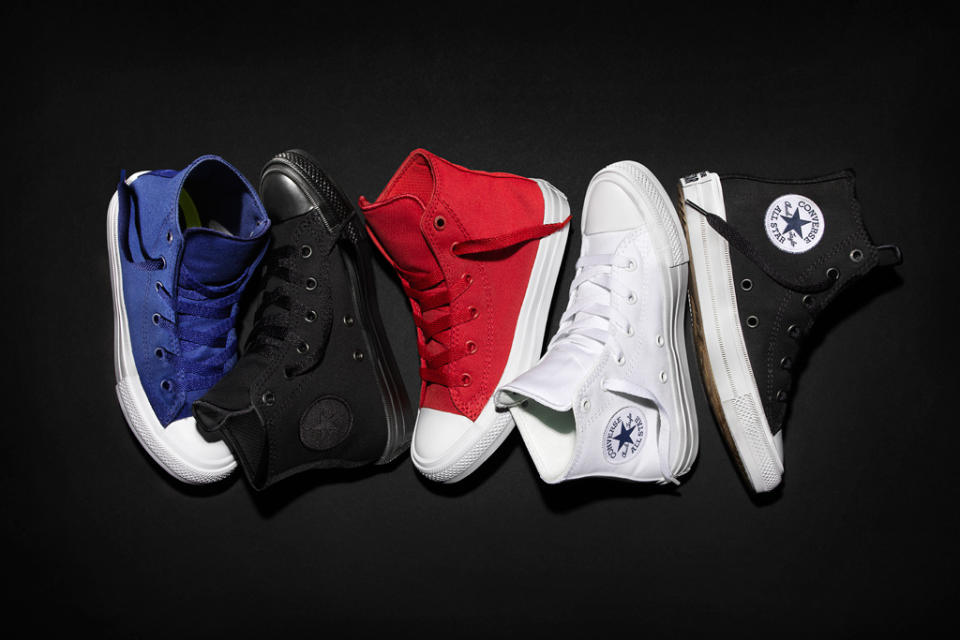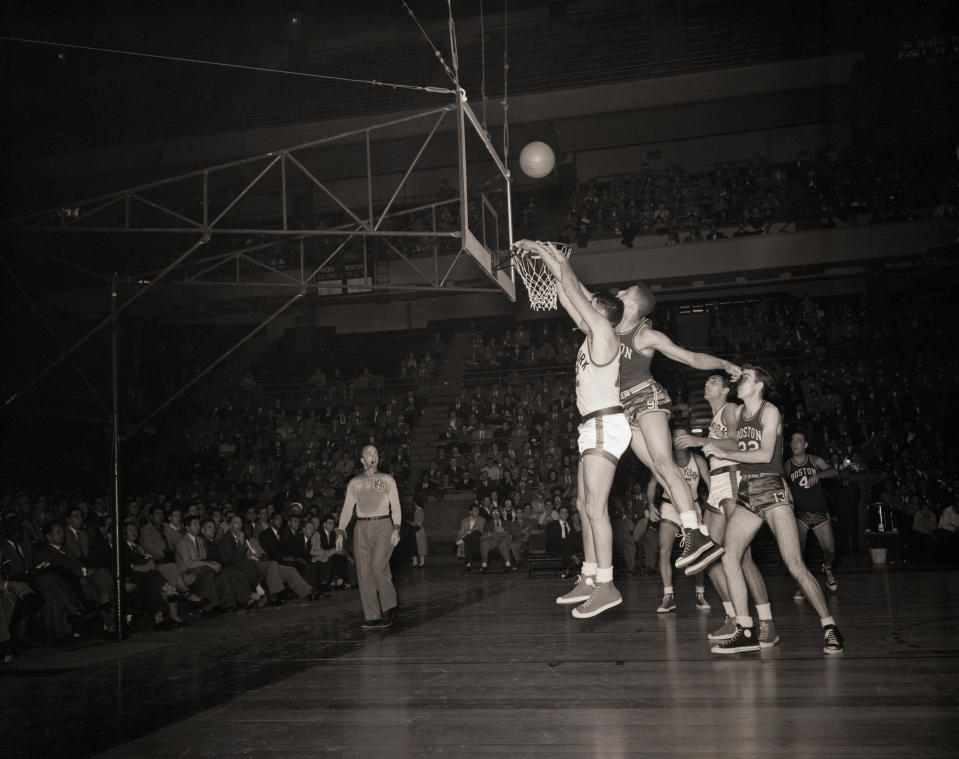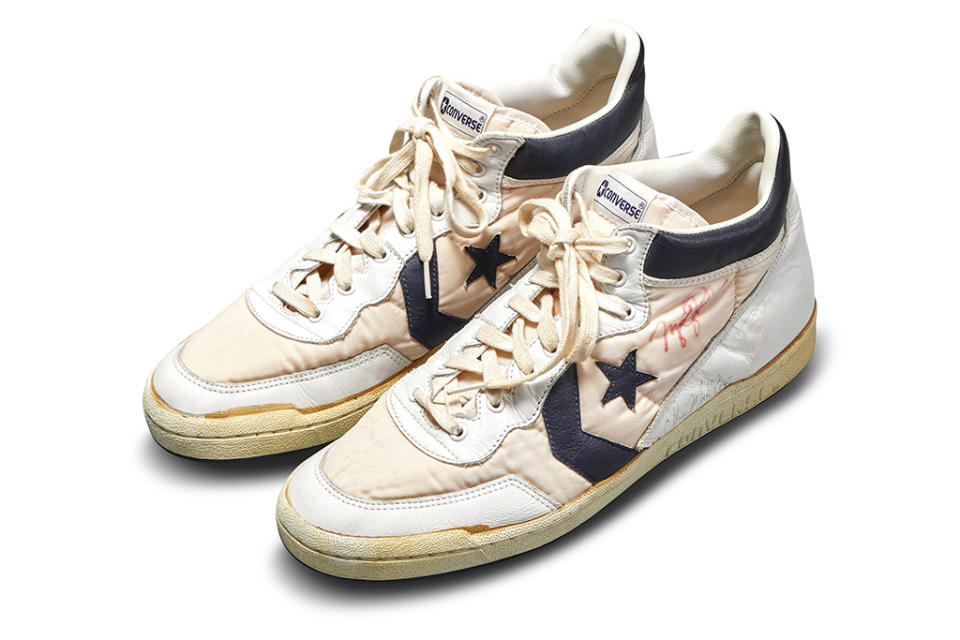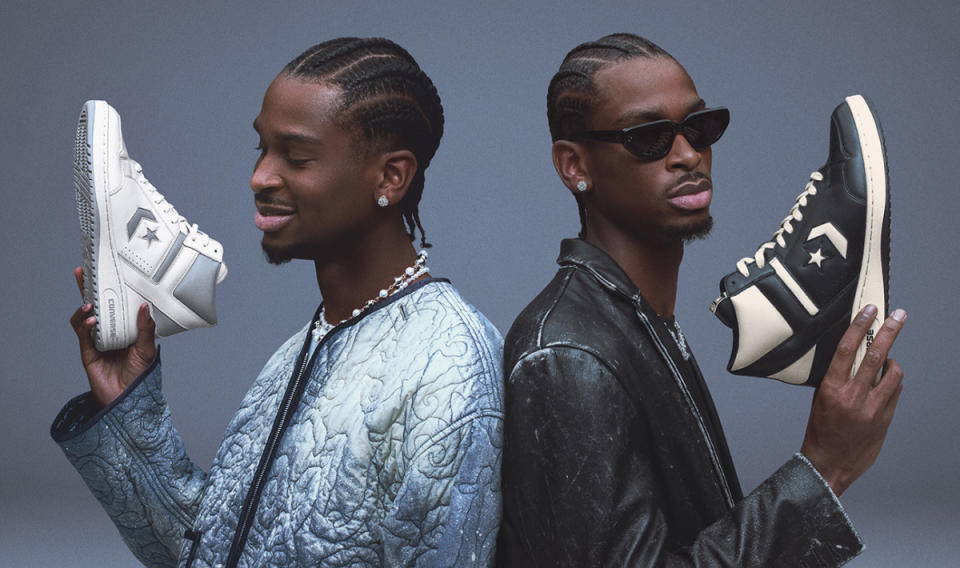The History of Converse: Chuck Taylor All Stars, NBA Deal and More

Converse took a simple vulcanized canvas shoe and turned it into a fashion and pop culture phenomenon. Originally designed for the newly invented sport of basketball, the brand’s Chuck Taylor All-Star sneakers went on to become a global icon, embraced by many different subcultures.
Over more than a century, the shoe has been made in a rainbow of colors and in high-top, low-top and platform versions. Generations of everyday people, musicians and celebrities have worn Chucks — as they are affectionately called — with hundreds of millions of pairs sold to date.
More from Footwear News
Here’s how Converse got its start and went on to create one of the most beloved, best-selling shoes of all time.
Entrepreneurial Spirit
The Converse story kicks off in the 1890 when Marquis Mills Converse, then a manager at a footwear manufacturing facility, established Converse & Pike in Boston together with a partner. As the fledgling company was getting its start, a pivotal moment was about to happen about 90 miles away in Springfield, Massachusetts: the invention of basketball in 1891.
Pike eventually left the enterprise, and Converse changed the company name to M.M. Converse and later to the Converse Rubber Shoe Co. in 1908. His solo venture was officially underway, boosted by $250,000 of venture capital (about $6.5 million today). The company set out to produce both footwear and car tires in an unusual business model.
Kicking Off
The first Converse shoes — rubber-soled galoshes — debuted in 1909, and within a year the company was making as many as 5,500 pairs per day.
By 1915, Converse had jumped into the athletic footwear category. The brand introduced the Non-Skid — a canvas style with a distinctive diamond tread pattern — designed for the fast-growing sport of basketball. In 1919, the shoe was renamed the All-Star.

Taylor Made
On one fateful day in 1921, a charismatic young basketball player named Charles Hollis “Chuck” Taylor applied for a sales job at Converse and ended up taking on an unofficial ambassador role. He wore and promoted the brand’s sneakers everywhere he went, pioneering sports marketing for Converse.
To show its commitment and enthusiasm for the game, Converse debuted its first Branded Basketball Yearbook in 1922, which was chock full of annual stats and highlights for players and fans.
Olympic Glory
In 1934, Taylor was honored for his dedication to Converse by having his signature added to the All Star patch on the brand’s high-top sneakers. They became known as Chuck Taylor All Stars. When basketball made its Olympic debut at the 1936 Games in Berlin, the American team sported patriotic red-and-blue striped All-Stars — and brought home the gold.
The first NCAA championship game took place in 1939, with both teams wearing Converse, solidifying the footwear brand’s dominance in the sport.
Rallying the Troops
When the U.S. entered World War II in 1941, Converse pivoted its production to focus on outfitting American troops with rubberized footwear, protective suits and coats. The GIs did their physical fitness training in the brand’s high-tops.
Taylor served as a captain in the Air Force and coached regional basketball teams to keep morale up among the men.
Back to Basketball
After the war ended, Converse started up its athletic footwear production once again. In 1949, the BAA and National League merged to form the NBA, and nearly all of the sport’s pro players were laced up in Converse shoes on the court. By 1955, Chucks reigned as the No. 1 branded basketball shoe in America, and Converse enjoyed 80 percent market share in the sneaker industry overall.

A low-top version of Chuck Taylor All Stars debuted in 1957 to great fanfare.
By 1997, Converse will have produced a staggering 550,000,000 pairs of Taylor’s iconic shoe.
Loss of a Legend
In 1969, Taylor was inducted into the Naismith Memorial Basketball Hall of Fame but sadly died that same year. Around that time, Converse’s dominance in basketball began to be challenged as formidable new competitors — including Reebok, Adidas and Nike — entered the game.
However, the brand continued to have breakout hits. In 1976, it unveiled the All-Star Pro Leather, featuring the brand’s classic Star Chevron insignia. The sneaker would go on to be worn by more pro and college basketball players than any other shoe in history.
Performance Powered
To take its basketball shoes to the next level, Converse developed one of the industry’s first biomechanics labs to inform and guide its design process. The brand pioneered high-tech midsole cushioning systems and energy return technology to power players’ performance. In 1983, Converse introduced the Fastbreak, one of the lightest basketball shoes to date.

When the jogging craze took off across the country among recreational runners, Converse got in on the action, creating biomechanic running shoes.
Tough Times
As the 2000s kicked off, Converse found itself struggling amid the heightened competition in the athletic market. The brand had also lost its exclusive relationship with the NBA. With its debts piling up, the company filed for bankruptcy in 2001 and shut down its remaining U.S. manufacturing operations.
Two years later, Nike stepped in and bought Converse for $305 million, creating a synergistic union that would put new wind in the brand’s sails.
New Chapter
Together with Nike, Converse steadily rebuilt, tapping into demand for retro-styled casual footwear by reviving some of its ‘80s icons. The brand also broke onto the skateboarding scene with its One Star and Cons styles. Under its Cons skate program, Converse signed a roster of influential ambassadors from the sport.

Fueling its fashion business, Converse has gone heavy into the collaboration game in recent years with an eclectic mix of designers, artists, celebrities and licensed entertainment properties. The list includes Comme des Gar?ons, Maison Margiela, Andy Warhol, Metallica, “The Simpsons,” Missoni and Nintendo.
Most recently, Converse has had a huge hit on its hands with a platform version of the classic Chuck Taylor, fueled by TikTok trends and celebrity fans.
Who Owns Converse?
The brand has had a series of owners over the course of its 116-year history. Nike Inc. has owned Converse since 2003.

Converse Revives Weapon Sneaker With Campaign Featuring Shai Gilgeous-Alexander
Best of Footwear News
Sign up for FN's Newsletter. For the latest news, follow us on Facebook, Twitter, and Instagram.
Solve the daily Crossword

